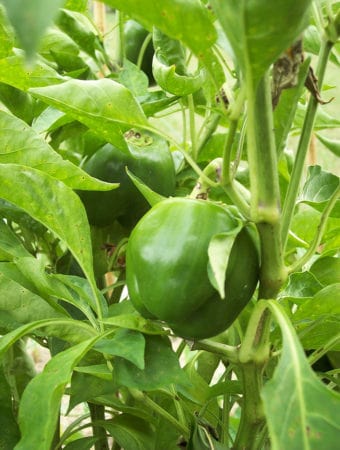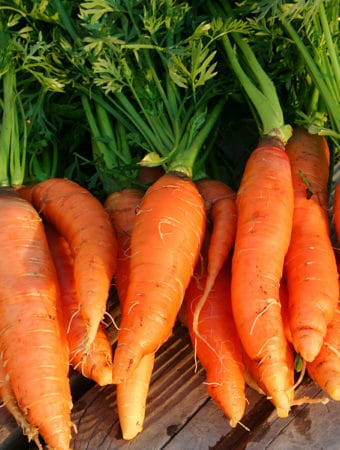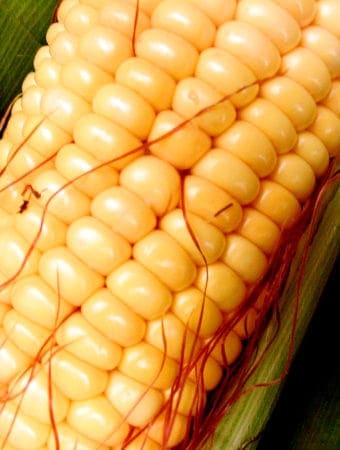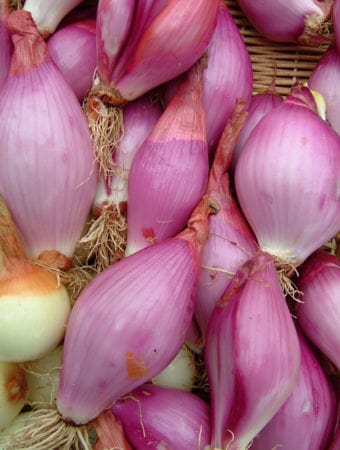Mint is one of the most popular herbs. There are many mints for the gardener and cook to choose from spearmint, peppermint, apple mint, pennyroyal, lemon mint, pineapple mint, and ginger mint to name a few. Cooks prefer spearmint for most savory dishes; it’s less overpowering than other mints such as peppermint which is very strong flavored with a strong menthol aroma. Mint leaves are used in teas, cold drinks, salads, and vegetables, and, of course, mint is a favorite served with peas and lamb.
Here is your complete guide to growing mint.
Where to Plant Mint
- Best location: Plant mint in filtered shade or partial shade; mint will tolerate full sun but it’s best to avoid hot, direct sun.
- Soil preparation: Mint grows best in loamy and moist but well-drained soil. Do not add too much-aged compost or aged manure to the area where mint grows; high fertility can leave mint susceptible to rust. Mint prefers a soil pH of 6.0 to 7.0.
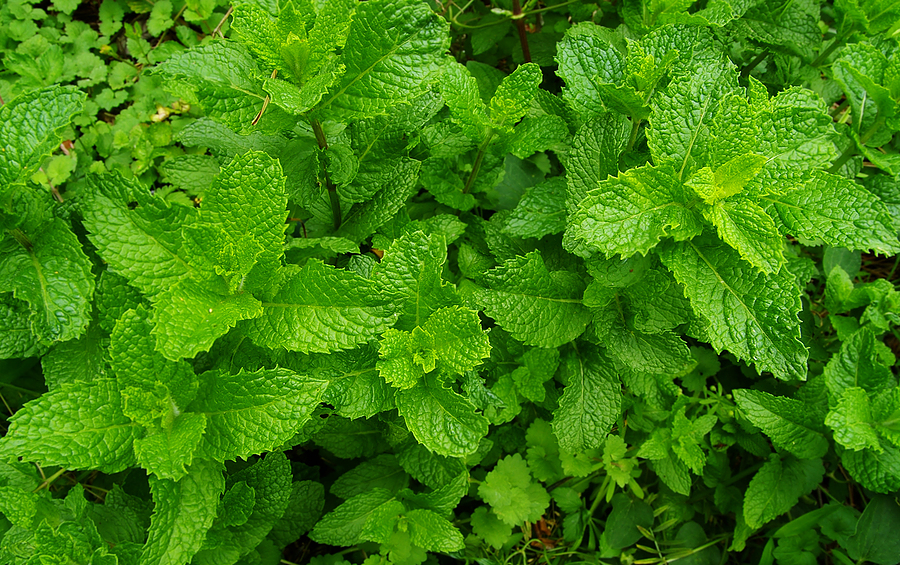
When to Plant Mint
- Seed starting indoors: Start mint from seed indoors in spring 3 to 4 weeks before the last frost. Mint seed can be slow to germinate. Start mint in flats under fluorescent lights. Note: mint seed does not always grow true to the parent. Sowing store-bought seeds will ensure you grow the variety you want.
- Transplanting to the garden: Set mint seedlings in the garden two or more weeks after the last frost in spring. Grow mint from divisions or cuttings started in cool weather, spring or fall. You can also plant store-bought seedlings in spring or fall.
- Outdoor planting time: Sow seed outdoors in early spring. Plants started from division or layering can be planted in the garden from spring to fall.
How to Plant Mint
- Planting depth: Sow seed ¼ to ½ inch deep. Grow mint in bottomless containers set into the ground; this will keep roots and stems from running into other parts of the garden.
- Spacing: Space plants 12 to 18 inches apart or more; mint spreads quickly.
- How much to plant: Plant one or two mints for cooking. Grow 8 to 12 plants for tea and preserving. A variety of mints can be grown in separate containers.
Mint Companion Plants
- Companion planting: Plant mint with asparagus, carrots, celery, cucumbers, onions, parsley, peppers, and tomatoes. Do not plant mint in the same container as other herbs; it can choke out other plants. The sharp fragrance of mint repels insect pests; the flowers attract beneficial insects. Mint is said to improve the vigor and flavor of cabbage and tomatoes. Unchecked mint can be very invasive; plant it in pots and set the pots near the plants you want to protect. Place saucers beneath the pots so the roots do no escape.
Watering and Feeding Mint
- Watering: Water mint regularly and evenly. Mint prefers moist soil. If grown in dry soil mint will spread less rapidly.
- Feeding: Feed mint at planting time and again in mid-summer with compost tea or a dilute solution of fish emulsion. Top-dress mint with an inch or more of compost or well-rotted manure in fall.
Mint Care and Maintenance
- Care: Mint can be invasive; it spreads rapidly by shallow, underground runners. Contain mint within metal strips set 10 inches into the soil or bottomless containers 10-inches deep sunk into the ground. Dig out old plants after five years and start anew.
- Pruning: Keep mint pinched back for fuller growth; prune back the top half of the plant in late spring and mid-summer. Cut woody stems back to encourage succulent growth. Avoid letting flowers bloom; flowering will decrease the oil content of leaves. Removing flowers will also prevent cross-pollination. Thin clumps for good air circulation to prevent root and foliage disease. Cut back and replant mints every two to three years. If not cut back, mint can become woody.
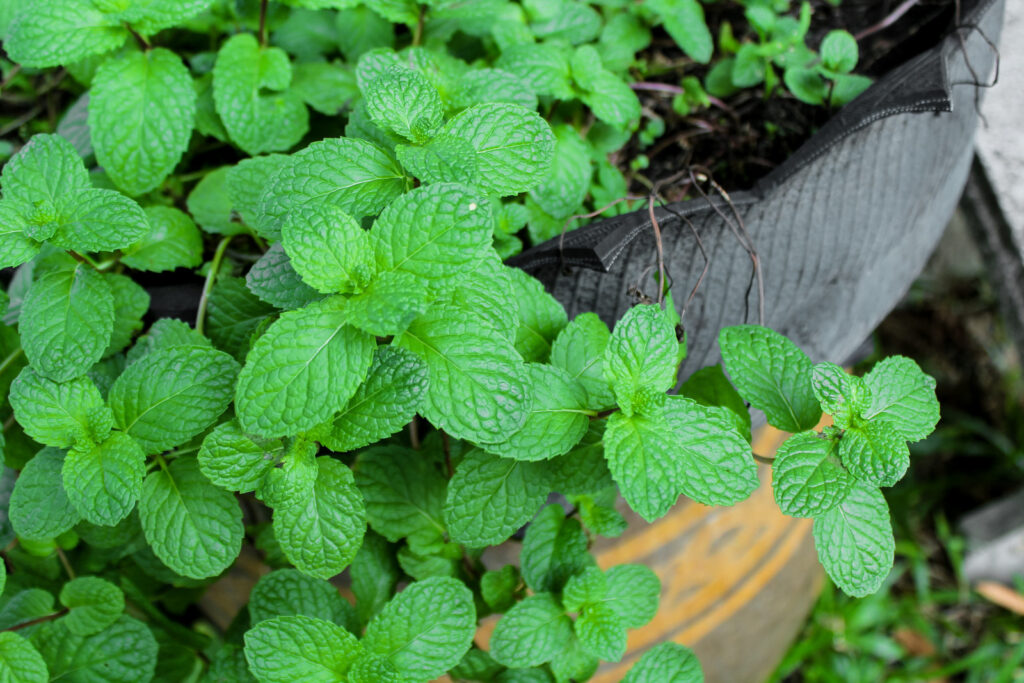
Container Growing Mint
- Container growing: Mint can be container grown as an annual. Choose a container at least 8 to 10 inches deep. Divide and repot container-grown mints every year to keep them healthy.
- Winter growing: Cut mint back to the ground in late autumn and put mulch on top to protect crowns and roots from winter cold.
Mint Pests and Diseases
- Pests: Aphids, mealybugs, and spider mites can attack mint; spray these away with a strong blast of water or spray them with insecticidal soap.
- Diseases: Mints are susceptible to verticillium wilt, mildew, and mint rust. Avoid overhead watering which can leave plants susceptible to fungal diseases. Remove diseased or dead stems and leaves from the bed before winter. Replant the roots in a different spot. Mint rust is a fungal disease—the lower leaves will be speckled with orange; destroy the infected leaves and replant the roots in another spot.
How to Harvest Mint
- When to harvest: Pick mint leaves and sprigs as you need them throughout the growing season. Cutaway flower stalks before they bloom for a sweeter taste. Cut the entire plant down to 2 or 3 inches above the soil at midseason and it will regrow for a second harvest.
- How to harvest: Use a snip or scissors to cut off the top leaves and tips of branches or pinch off individual leaves for fresh use. For drying, cut stems 4 to 6 inches above the soil surface.
Mint in the Kitchen
- Flavor and aroma: Mint has a sweet, slightly hot flavor, and a cool aftertaste. Mint has a strong menthol aroma.
- Leaves: Add freshly chopped mint leaves to leafy green salads, fruit salads, or pasta salads.
- Add mint to cooked peas, steamed potatoes, and carrots. Add a tablespoon of minced mint to cooked rice just before serving. Add mint to veal, eggplant, beans, fruit salads, beverages, creamy vegetables, soups, and sauces. Serve mint leaves with peas and lamb. Use leaves to flavor drinks, jellies, candy, chocolate, and desserts. Add spearmint to steamed carrots or new potatoes. Add apple mint and pineapple mint to drinks, fruit salads, cottage cheese, and cream cheeses.
- Teas: Use mint to flavor teas. Add a sprig of mint to a pitcher of lemonade to create a refreshing drink
- Culinary companions: Mint is a complement to cilantro, lemon verbena, oregano, and rosemary. Mint will complement the flavors of meat, fish, and vegetable dishes.
Preserving and Storing Mint
- Refrigeration: Wrap mint in a damp paper towel and store it in a perforated plastic bag in the refrigerator crisper where it will keep for two or three days.
- Drying: Dry stems upside down in a warm, shady place; let stems dry for 2 to 5 days then strip dried leaves to be stored in an airtight jar. Leaves also can be dried in a dehydrator. Mint holds its fragrance and flavor when dried.
- Freezing: Freeze mint leaves in a plastic bag. Freeze leaves in ice cubes for later use. Freeze 6 to 8-inch sprigs. Crumble frozen mint into cookie dough for minty cookies.
- Storing: Store dried mint leaves in an airtight jar.

Mint Propagation
- Seed: Mint seed does not always grow true to its parent. Cuttings, division, and layering are better propagation alternatives.
- Cuttings: Root stem cutting in water. You can also cut a runner into sections several inches long then place the cuttings in moist, sterile growers mix and set in a sunny spot to root.
- Division: Divide plants and roots by slicing the plant or roots in half with a spade. Get new divisions started in cool, not hot weather.
- Layering: Cover the nodes of runners (stolons) with soil to root new plants. Rooted runners are easy to divide and plant separately.
Mint Varieties to Grow
There are more than 600 species and cultivars of mint; here are popular cultivars:
- Spearmint (Mentha spicata): dark green toothed leaves are slightly smaller than those of peppermint with a crinkly look and feel; the plant grows to 2 feet high; use fresh or dried to flavor food. This is the most popular mint for culinary use.
- Peppermint (Mentha piperita): the plant grows to 3 feet high and has strongly scented dark green toothed and pointed leaves to 3 inches long with purple flowers. Leaves give a cooling sensation in the mouth and throat; use to flavor sweets.
- Apple mint (M. suaveolens): stiff stems that grow 20 to 30 inches high; round, green-gray leaves 1 to 4 inches long are slightly hairy; purplish-white flowers on 3-inch spikes.
- Corsican mint (M. requienii): a small creeping plant that grows about 1 inch high; round leaves are slightly hairy and gray-green, about 1 to 4 inches long; purple-white flowers
- Chocolate mint (M. x piperita ‘Chocolate’): this mint has a chocolate flavor.
- Curly mint (
- M. spicata ‘Crispata’): this is a low growing groundcover that is quite aromatic.
- Ginger mint (M. x gentilis ‘Variegata’): a hint of ginger to mint flavor.
- Golden apple mint (M.x gracilis): smooth, deep green leaves variegated with yellow; the plant grows to 2 feet tall; use leaves to flavor foods.
- Horsemint ( M.longifolia): oval, hairy leaves; aromatic.
- Japanese mint ( arvensis piperescens): dark green leaves.
- Lemon mint (M. x piperita citrata): fresh lemony scent.
- Orange bergamot mint (M. x citrata): grows to about 2 feet tall and wide and has dark green, 2-inch leaves that are edged with purple; they taste and smell slightly or oranges; flowers are lavender growing in dense spikes.
- Pennyroyal (M. pulegium): low grower with downy, oval leaves that are not more than ½ inch long; small, rosy lilac flowers bloom in late summer and fall; leaves can be toxic in large amounts.
- Pineapple mint (M. suaveolens ‘Variegata’): pineapple fragrance when young.
- Water mint ( aquatic): round to oval leaves; strop peppermint fragrance.
Get to Know Mint
- Botanical name and family: Mentha species. There are many varieties of mint. Peppermint (Mentha piperita) and spearmint ( Mentha spicata) are the best known. See other mint varieties below. All are members of the Lamiaceae—mint family.
- Origin: Europe
- Type of plant: Herbaceous perennial
- Growing season: Summer
- Growing zones: Zones 5 to 9
- Hardiness: Mint is cold hardy to -20°F and easily withstands frost. Mint can be grown in cold winter climates but it is best over-wintered in a sheltered place or indoors. Mint can tolerate high humidity.
- Plant form and size: Mint generally grows upright 1 to 3 feet tall, though a few grow much shorter. Mint stems easily root when they touch the ground so mint can be invasive.
- Flowers: Whorls of small white, lavender, or purple blossoms on terminal spikes.
- Bloom time: Bloom mid-summer to fall.
- Leaves: Dark green, creased, round to oval leaves pointed at the tips grow opposite one another on four-sided stems.
More tips at How to Start an Herb Garden and Growing Herbs for Cooking
Also of interest:




